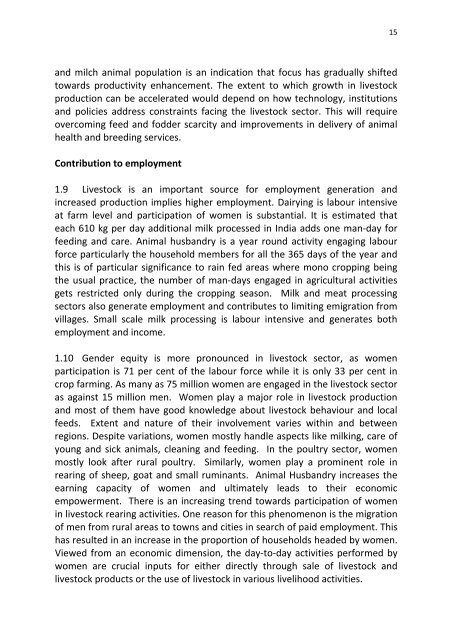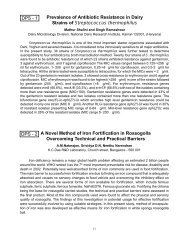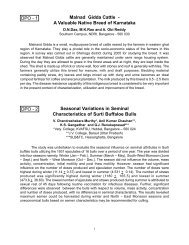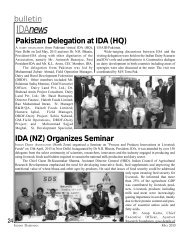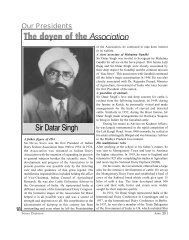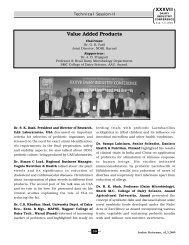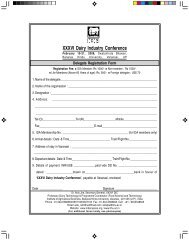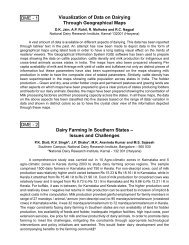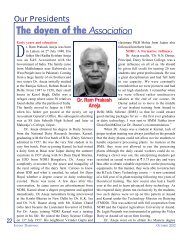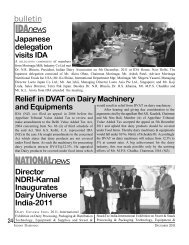Volume - Indian Dairy Association
Volume - Indian Dairy Association
Volume - Indian Dairy Association
- No tags were found...
Create successful ePaper yourself
Turn your PDF publications into a flip-book with our unique Google optimized e-Paper software.
15and milch animal population is an indication that focus has gradually shiftedtowards productivity enhancement. The extent to which growth in livestockproduction can be accelerated would depend on how technology, institutionsand policies address constraints facing the livestock sector. This will requireovercoming feed and fodder scarcity and improvements in delivery of animalhealth and breeding services.Contribution to employment1.9 Livestock is an important source for employment generation andincreased production implies higher employment. <strong>Dairy</strong>ing is labour intensiveat farm level and participation of women is substantial. It is estimated thateach 610 kg per day additional milk processed in India adds one man‐day forfeeding and care. Animal husbandry is a year round activity engaging labourforce particularly the household members for all the 365 days of the year andthis is of particular significance to rain fed areas where mono cropping beingthe usual practice, the number of man‐days engaged in agricultural activitiesgets restricted only during the cropping season. Milk and meat processingsectors also generate employment and contributes to limiting emigration fromvillages. Small scale milk processing is labour intensive and generates bothemployment and income.1.10 Gender equity is more pronounced in livestock sector, as womenparticipation is 71 per cent of the labour force while it is only 33 per cent incrop farming. As many as 75 million women are engaged in the livestock sectoras against 15 million men. Women play a major role in livestock productionand most of them have good knowledge about livestock behaviour and localfeeds. Extent and nature of their involvement varies within and betweenregions. Despite variations, women mostly handle aspects like milking, care ofyoung and sick animals, cleaning and feeding. In the poultry sector, womenmostly look after rural poultry. Similarly, women play a prominent role inrearing of sheep, goat and small ruminants. Animal Husbandry increases theearning capacity of women and ultimately leads to their economicempowerment. There is an increasing trend towards participation of womenin livestock rearing activities. One reason for this phenomenon is the migrationof men from rural areas to towns and cities in search of paid employment. Thishas resulted in an increase in the proportion of households headed by women.Viewed from an economic dimension, the day‐to‐day activities performed bywomen are crucial inputs for either directly through sale of livestock andlivestock products or the use of livestock in various livelihood activities.


